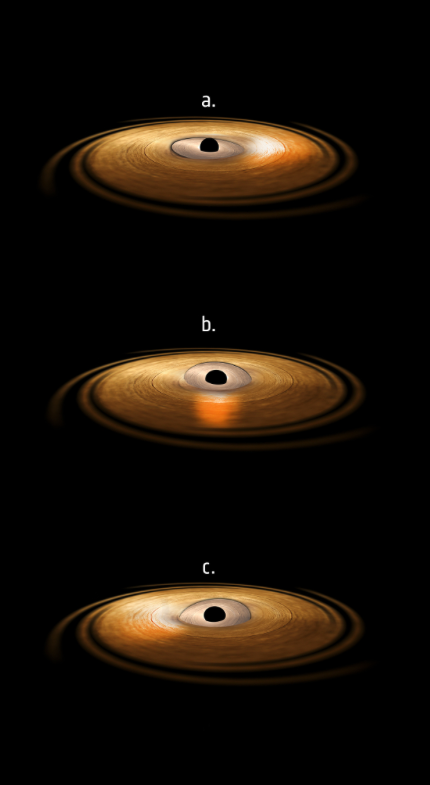
Artist’s impression of the XMM-Newton observatory.
Credit: ESA
Before matter passes into a black hole it heats up to temperatures that can reach millions of degree and therefore it emits X-rays. The first X-ray telescopes, in the ‘80s, discovered a phenomenon that was named Quasi Periodic Oscillation (QPO). During this phenomenon, the X-rays emitted from the black hole, flicker following a pattern that lasts for a few months and then suddenly ends. This phenomenon is believed to be associated with a gravitational effect predicted by Einstein’s general relativity: a spinning object will create a kind of gravitational vortex.
Now, according to Prof. Ingram, astronomers have found smoking gun evidence of this behavior around a black hole. They chose black hole H 1743-322, which was exhibiting a four-second QPO at the time. They watched it for 260,000 seconds with ESA’s XMM-Newton and 70,000 seconds with NASA’s NuStar X-ray observatories. Their analysis revealed that the phenomenon is in accordance with the predictions of general relativity. Testing Einstein’s theory in such strong gravitational fields is of great importance. “A deviation from its predictions would be a concrete signal that a deeper theory of gravity exists”, Ingram said.
Publication: Ingram et al. 2016
Source: ESA
